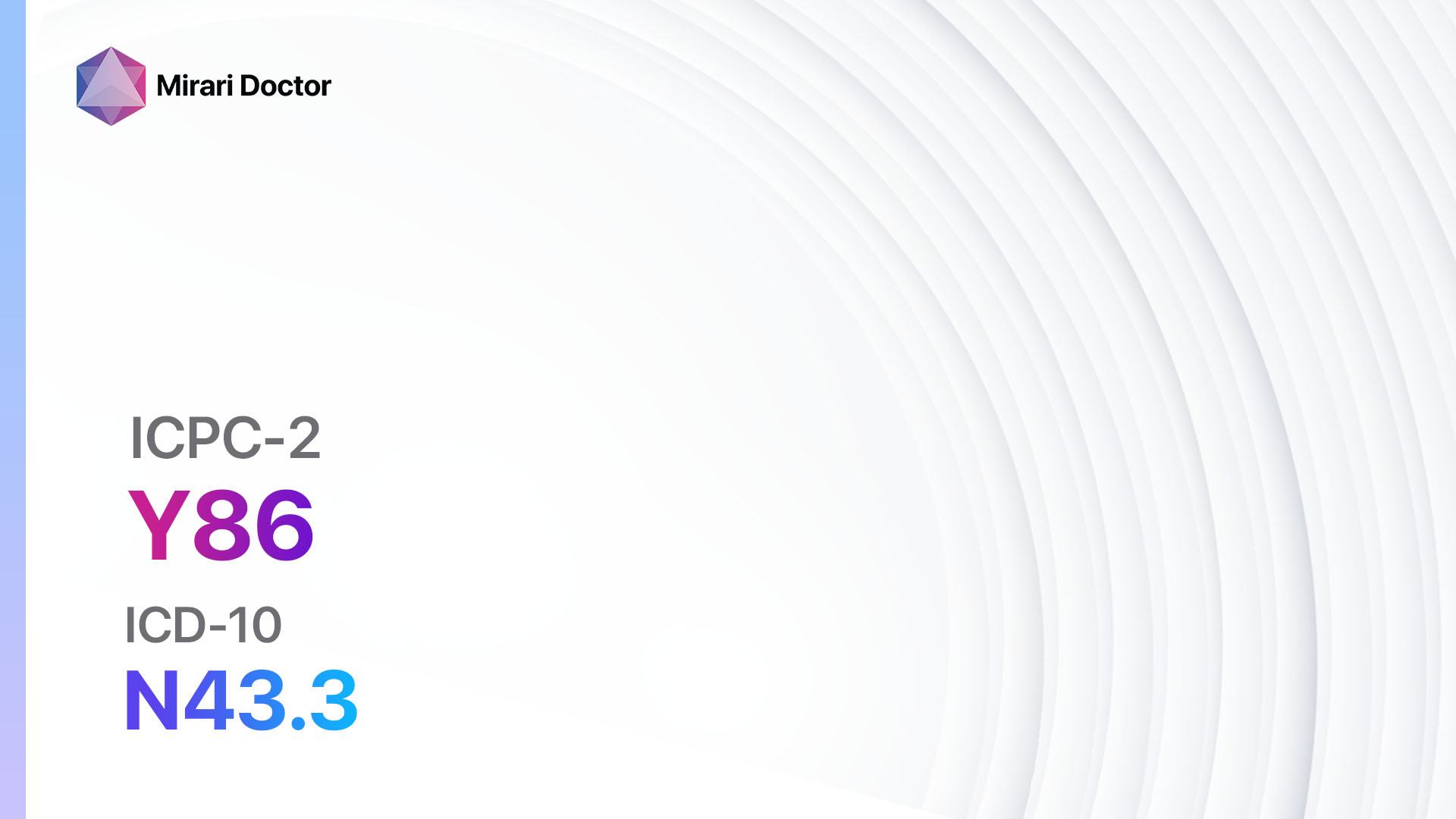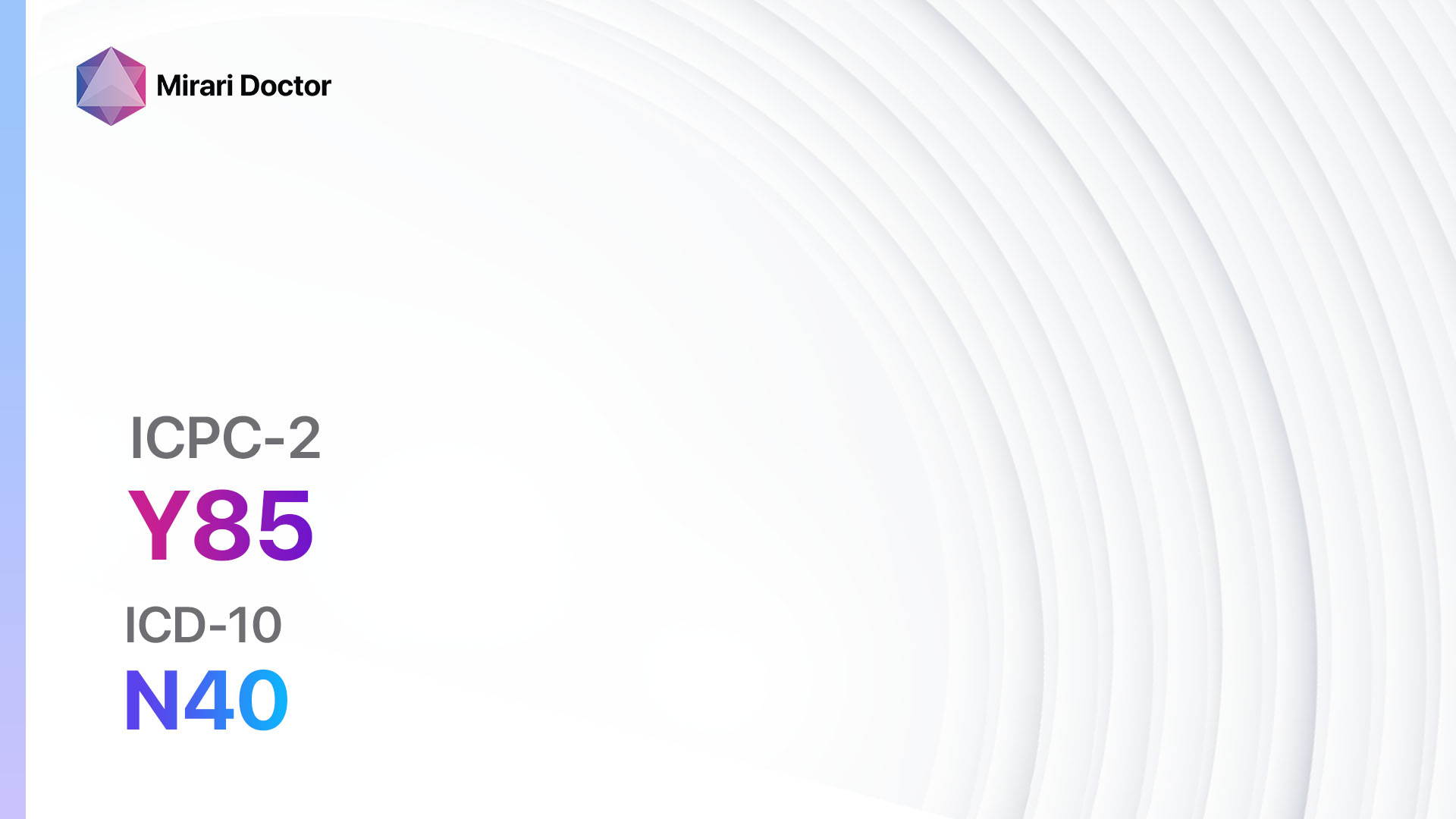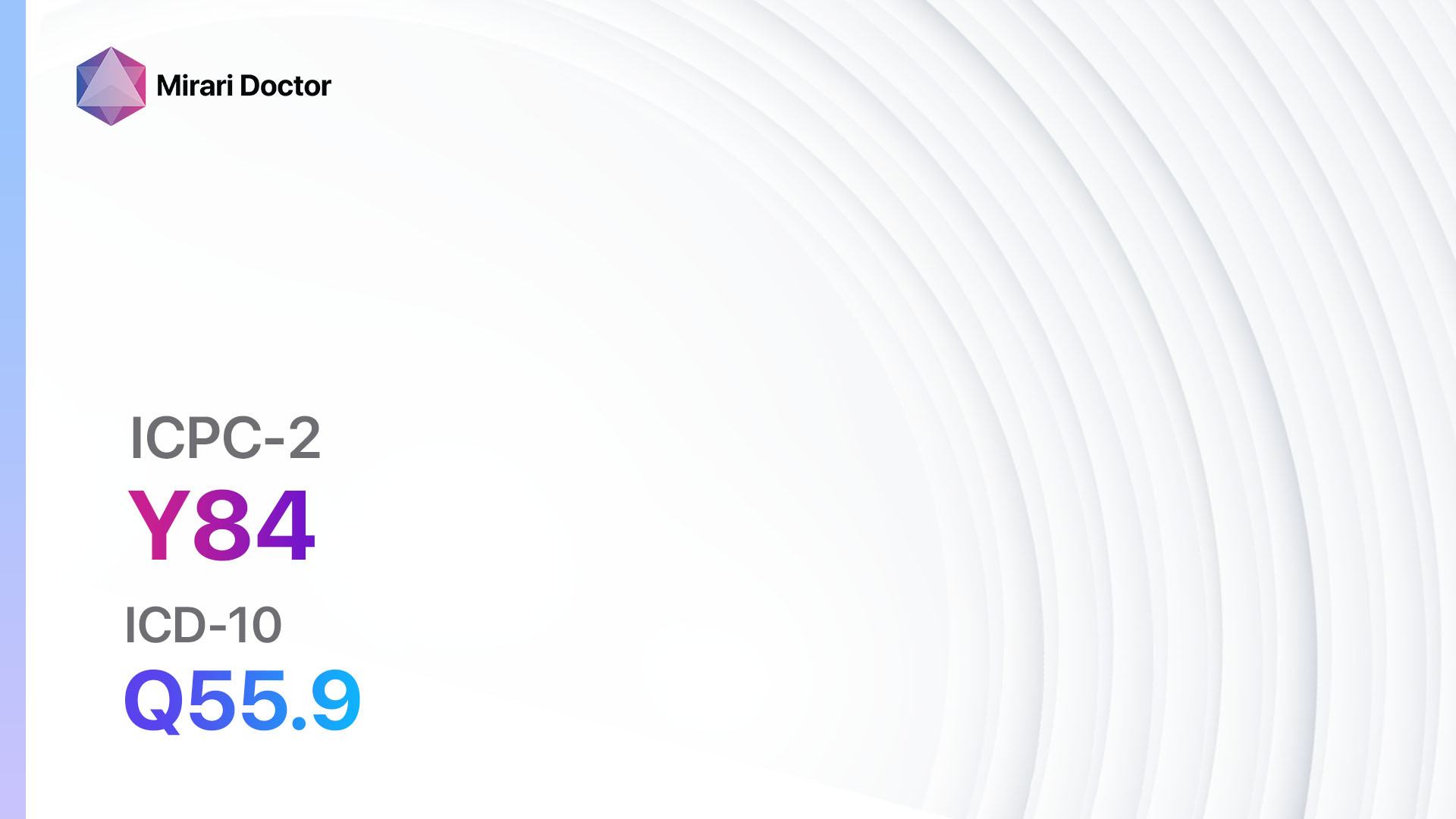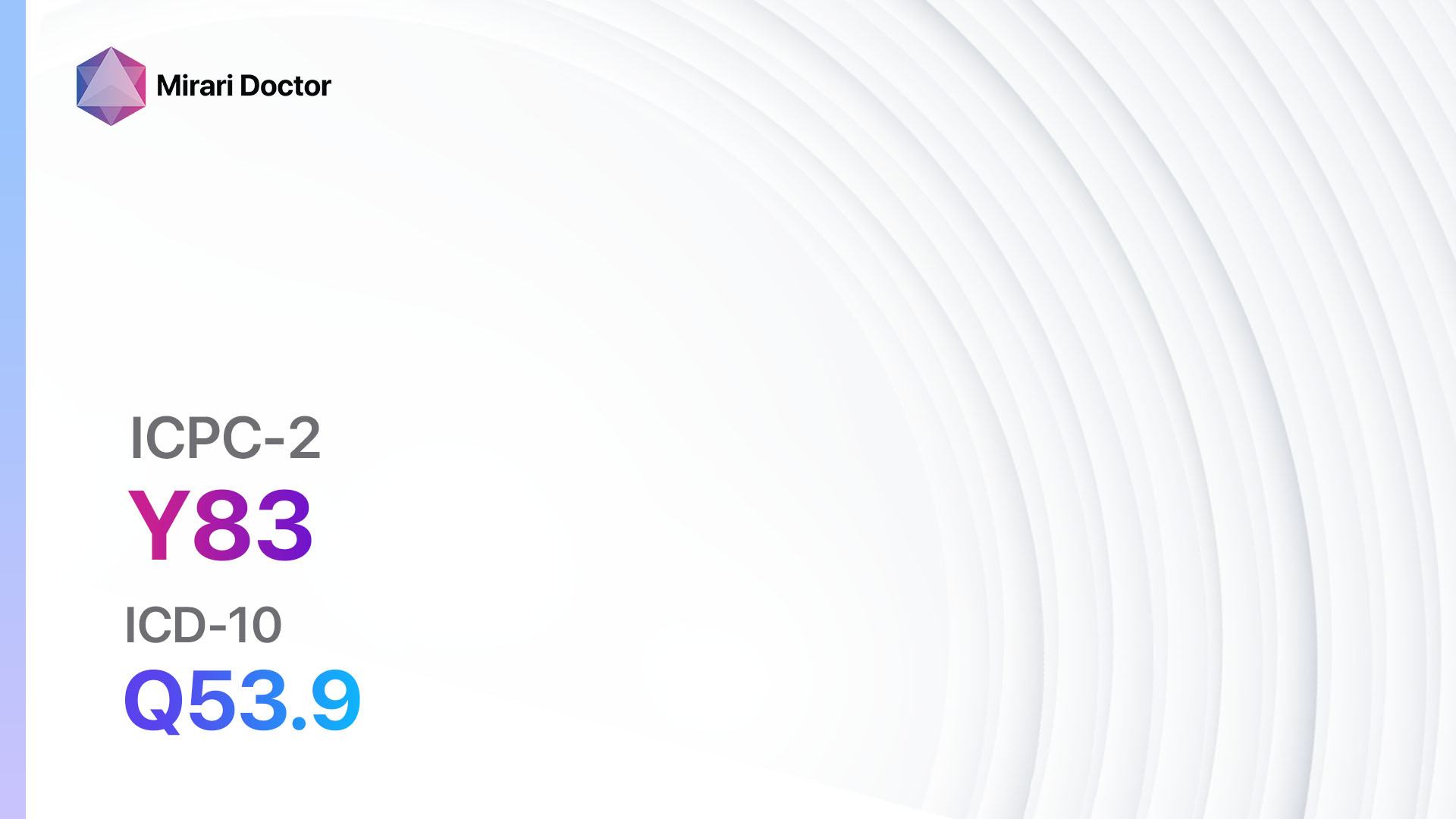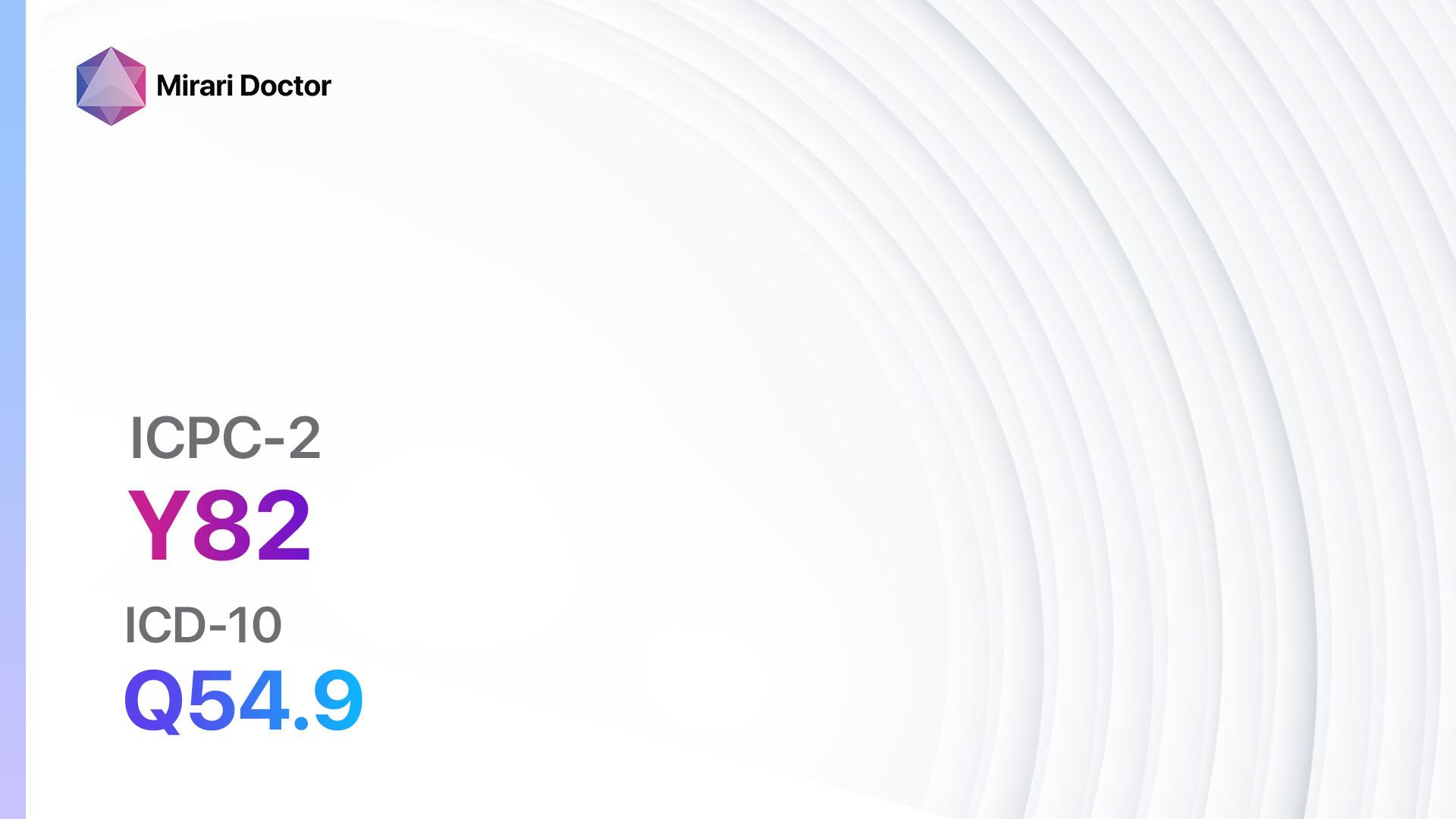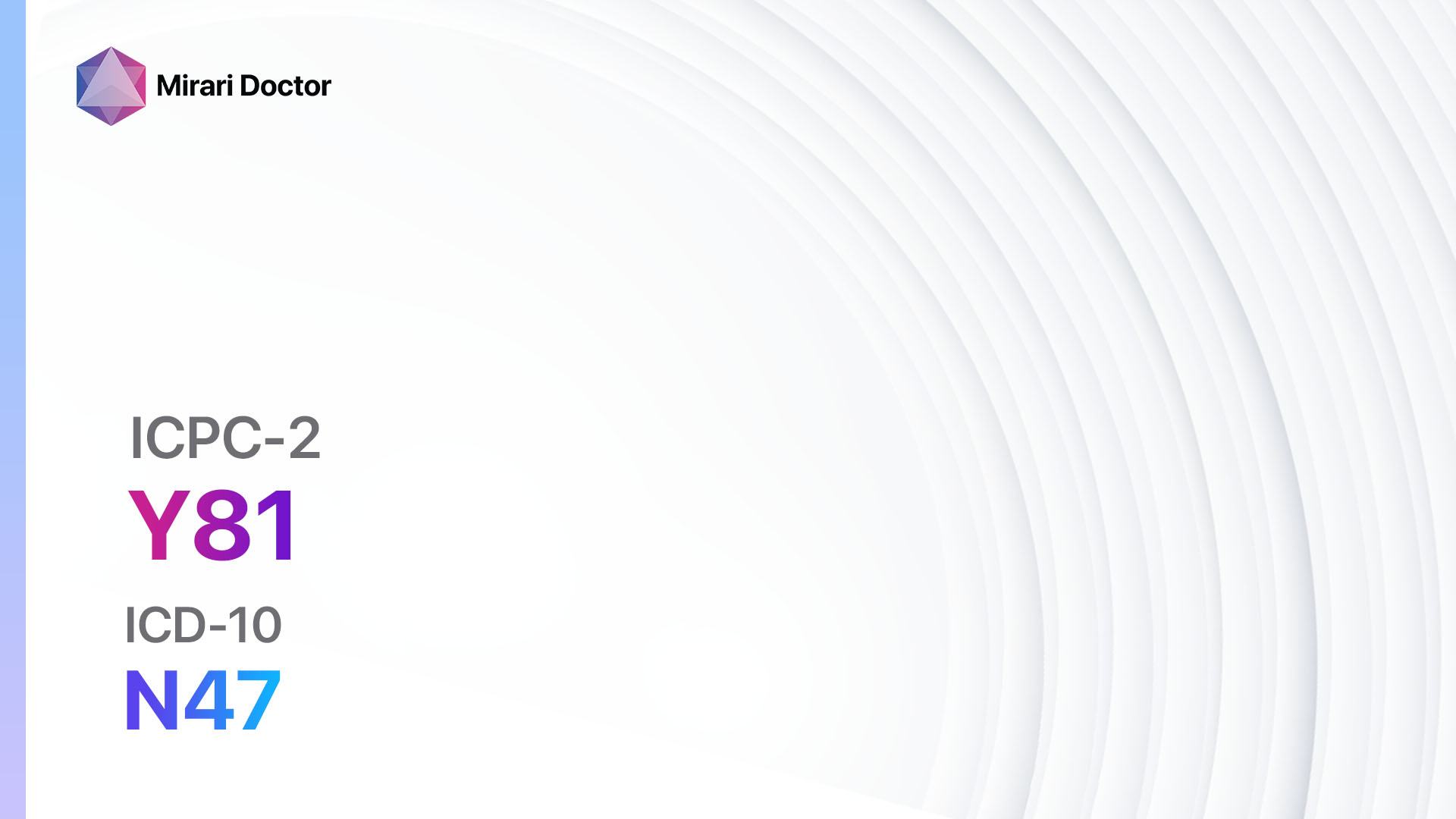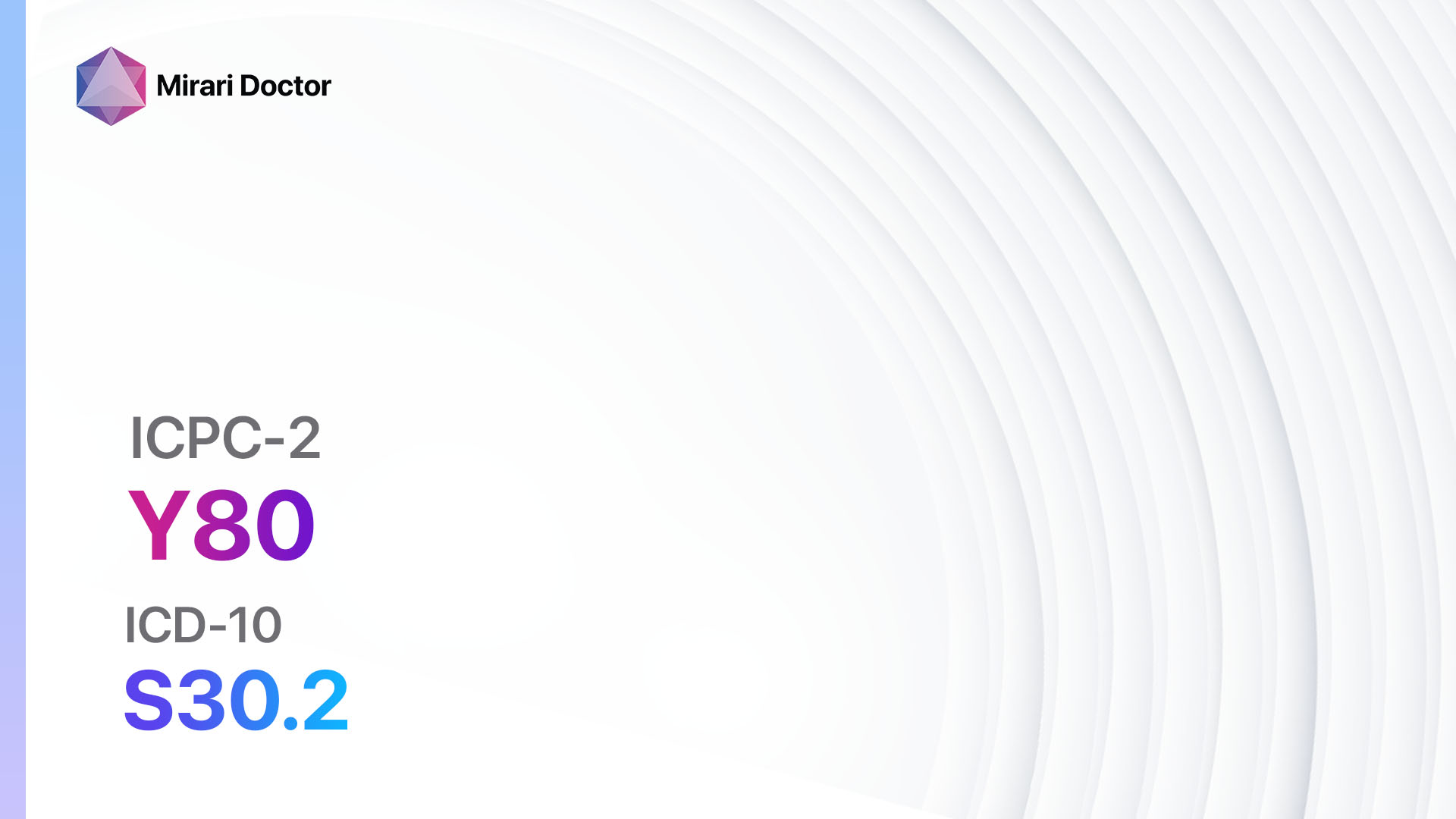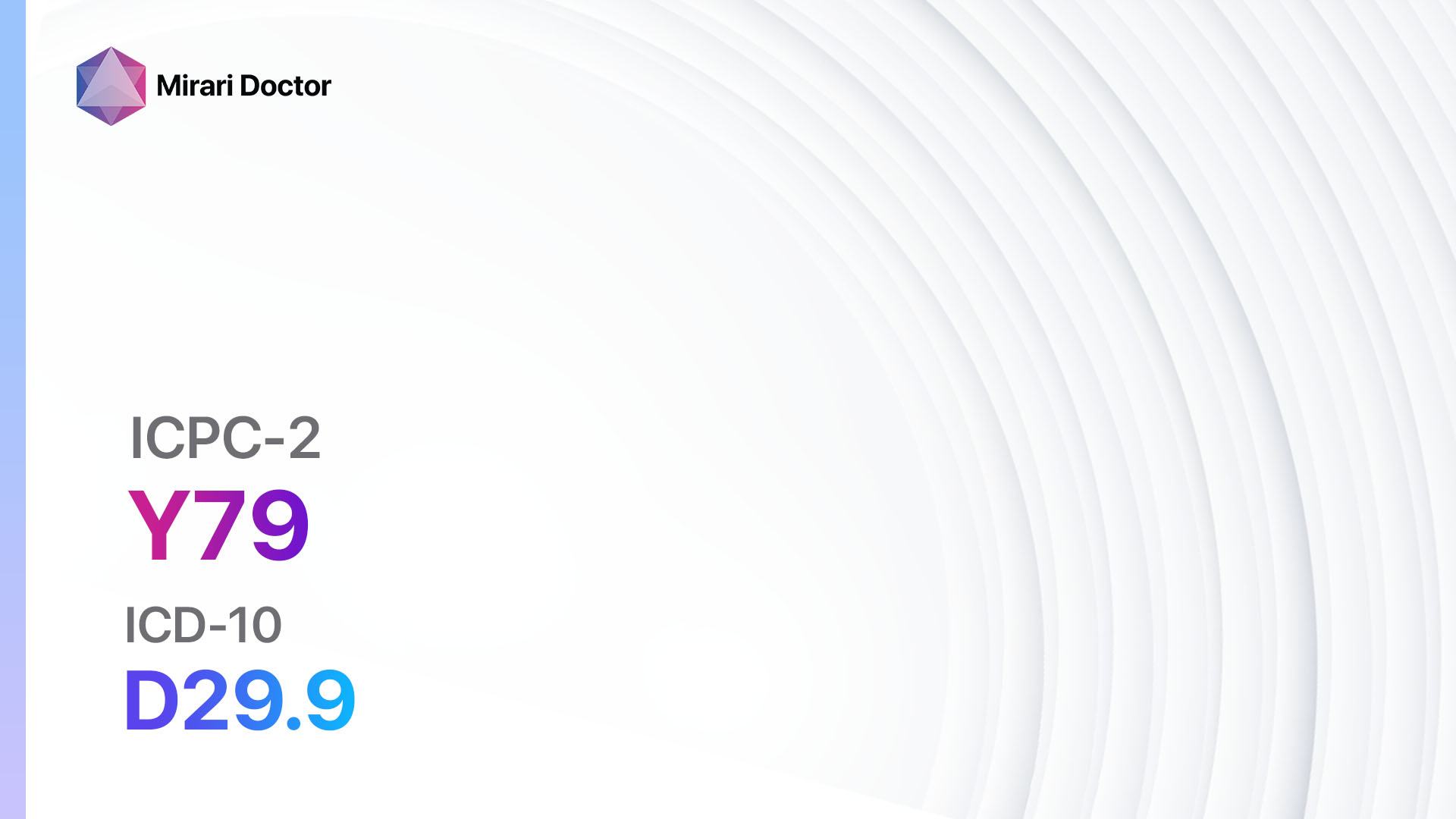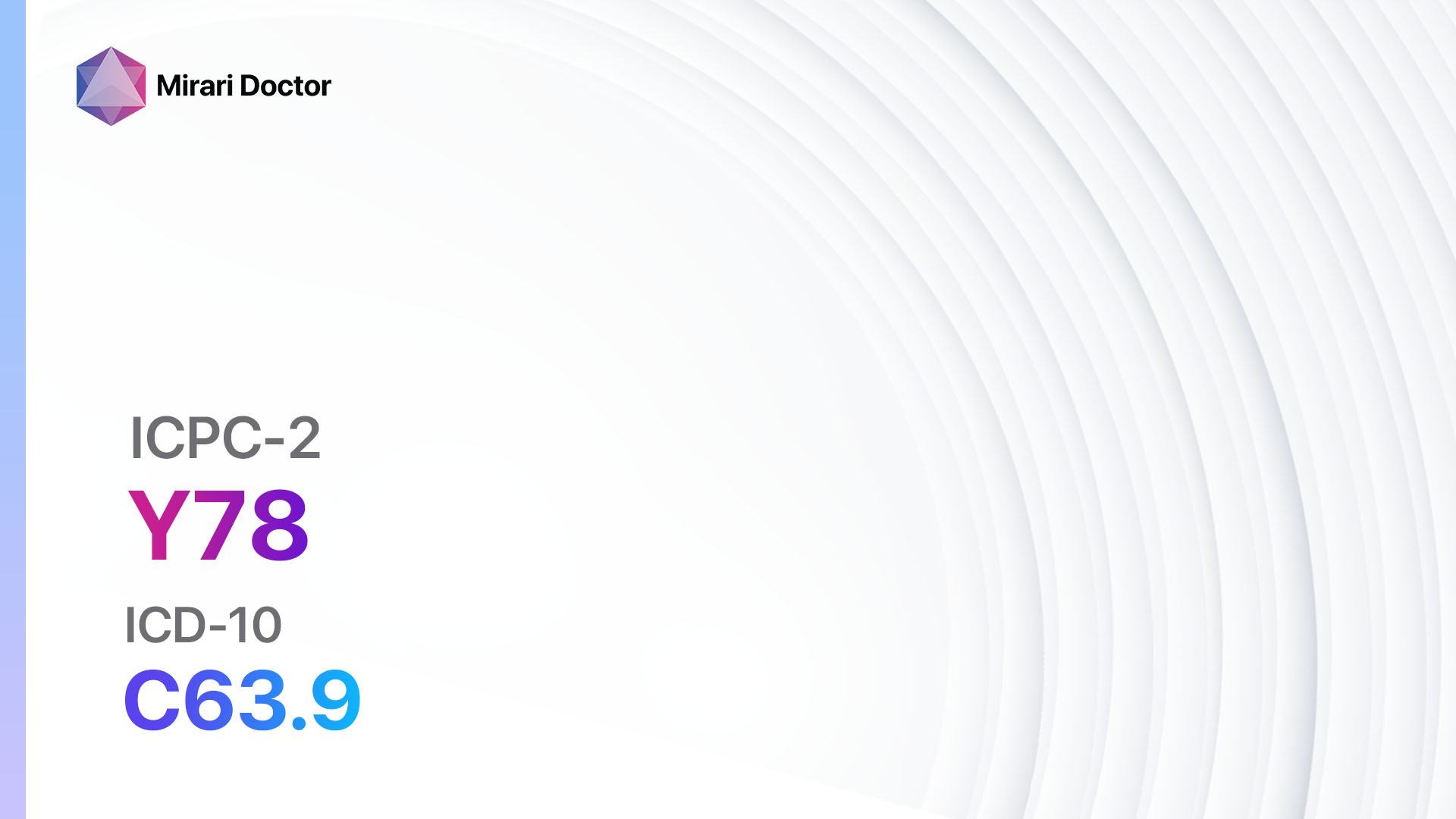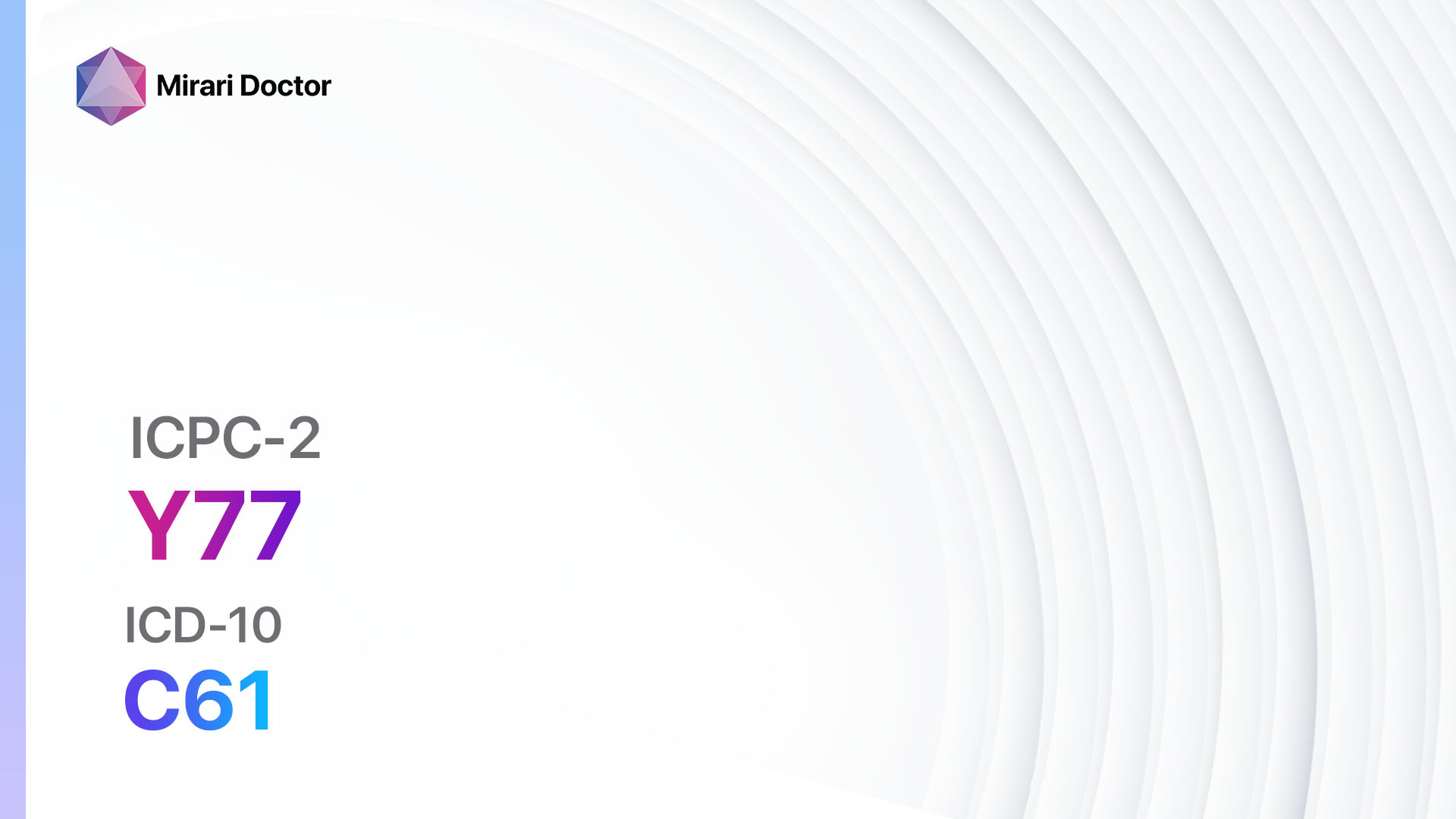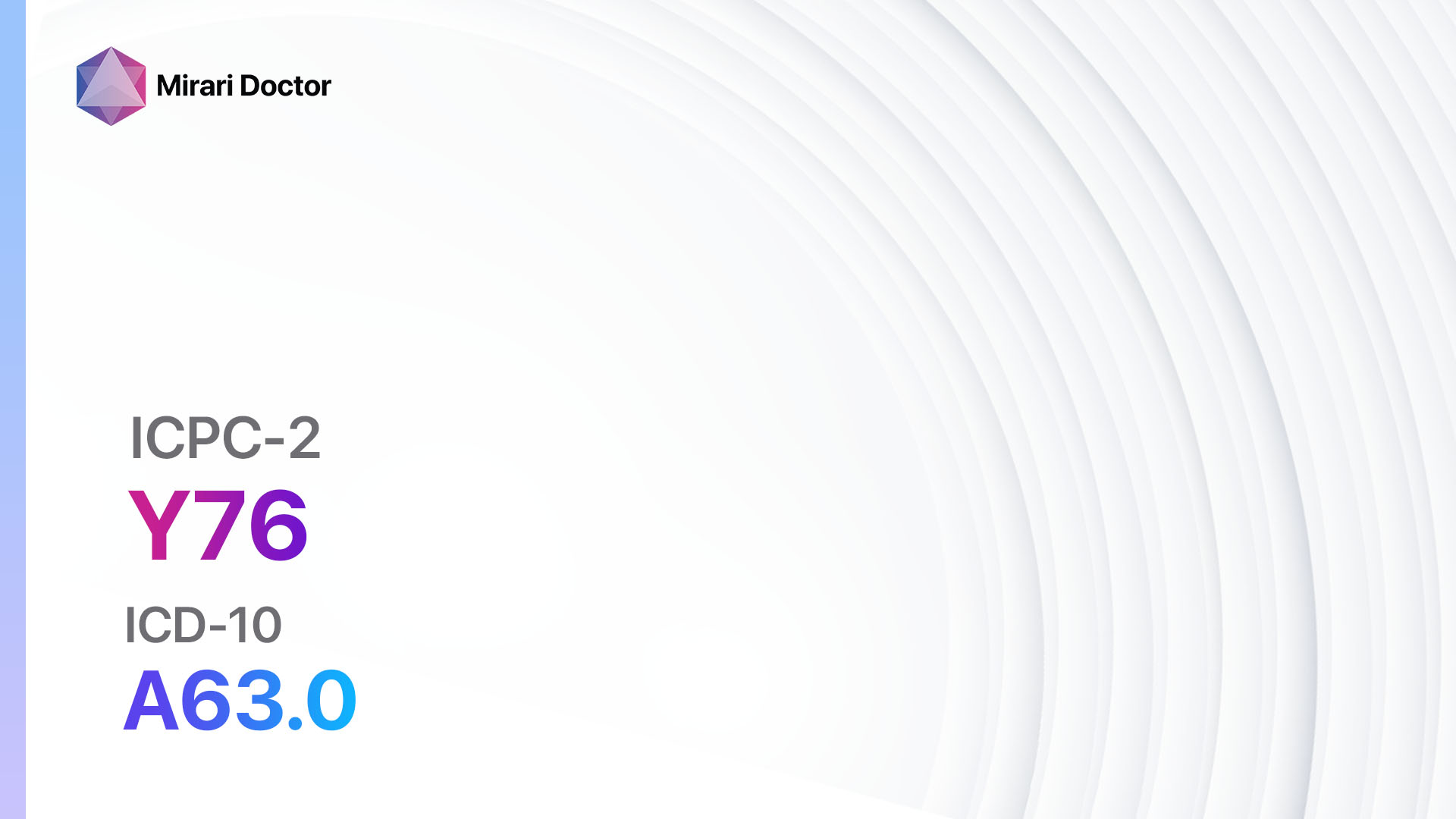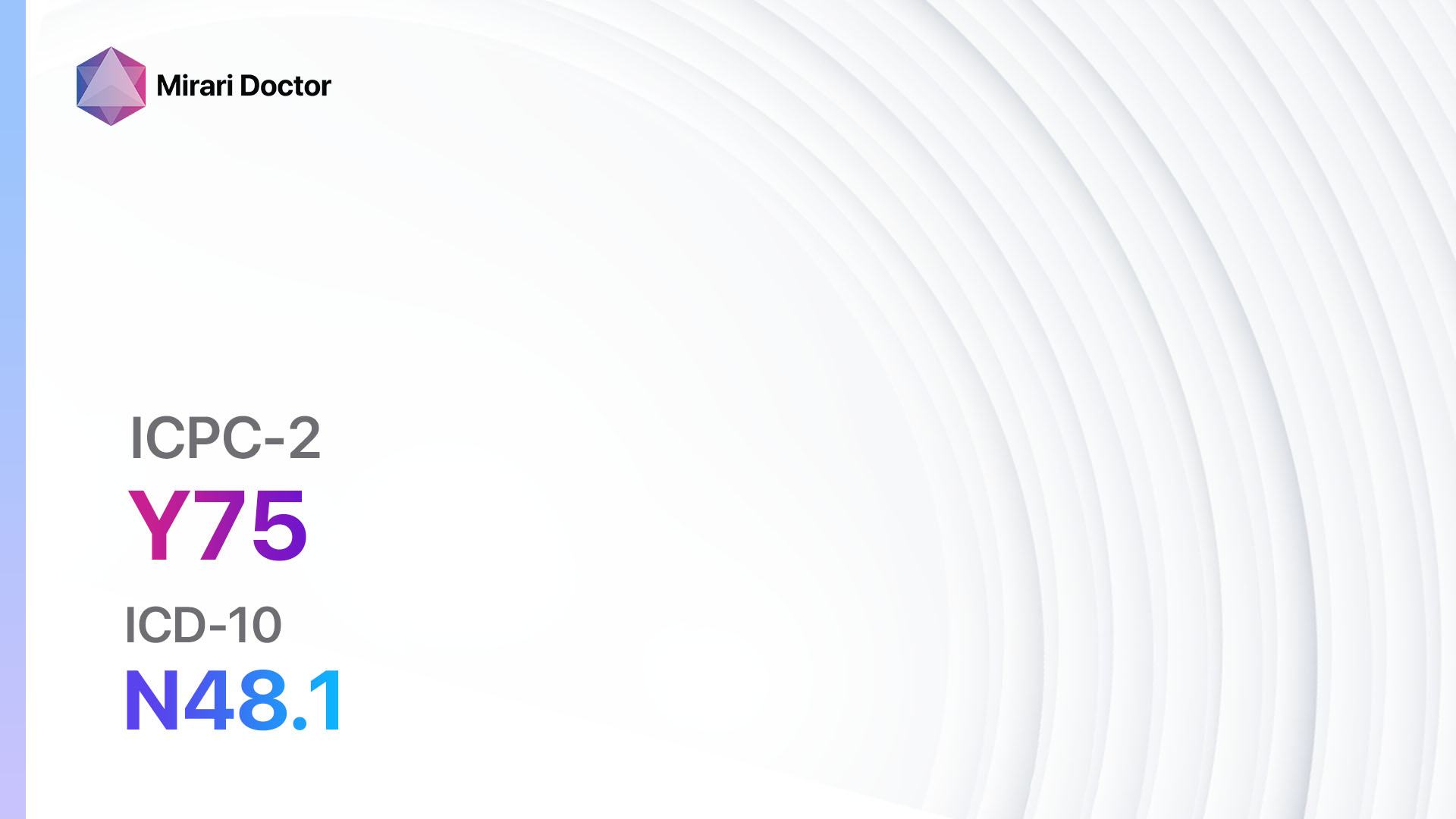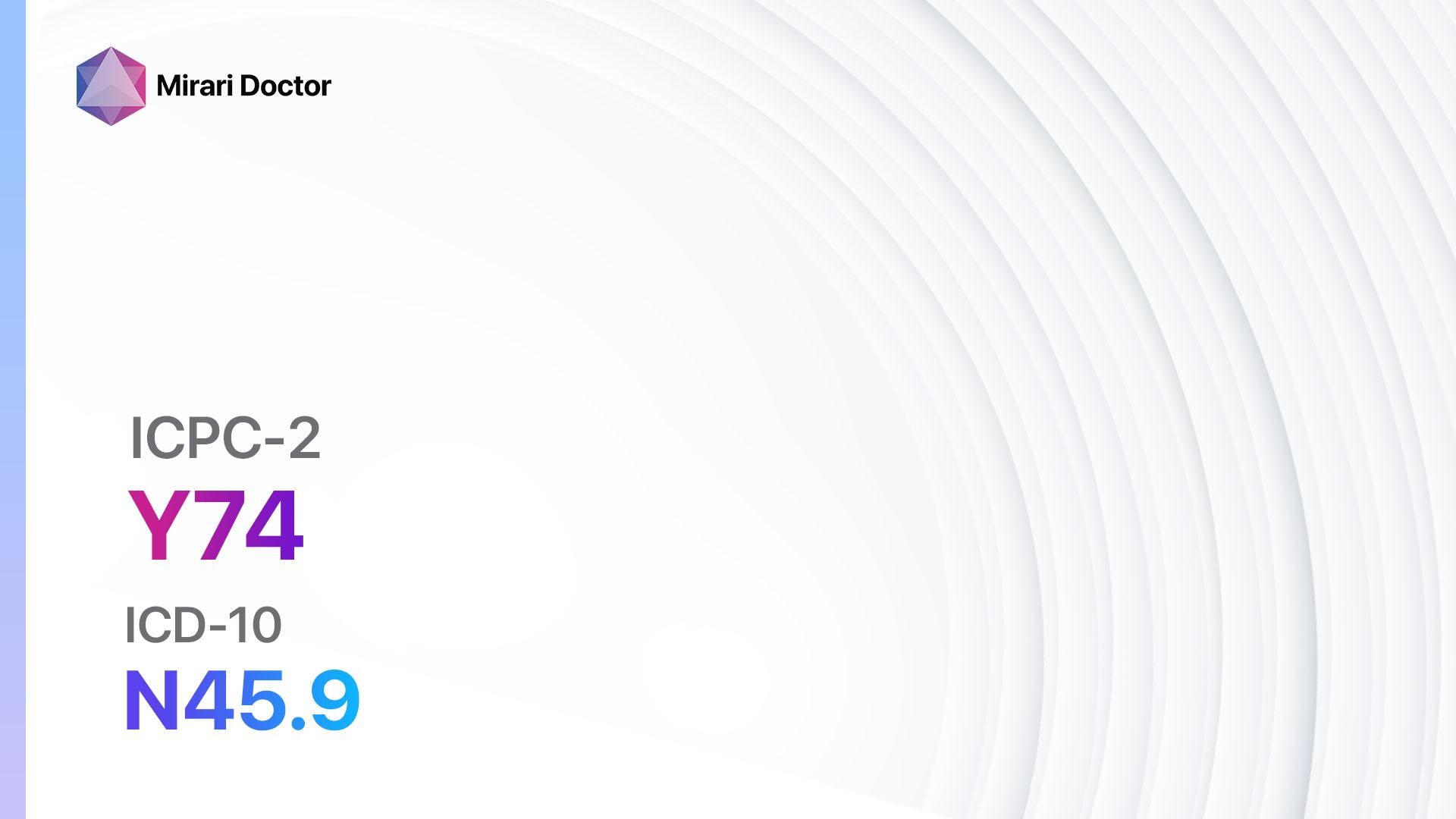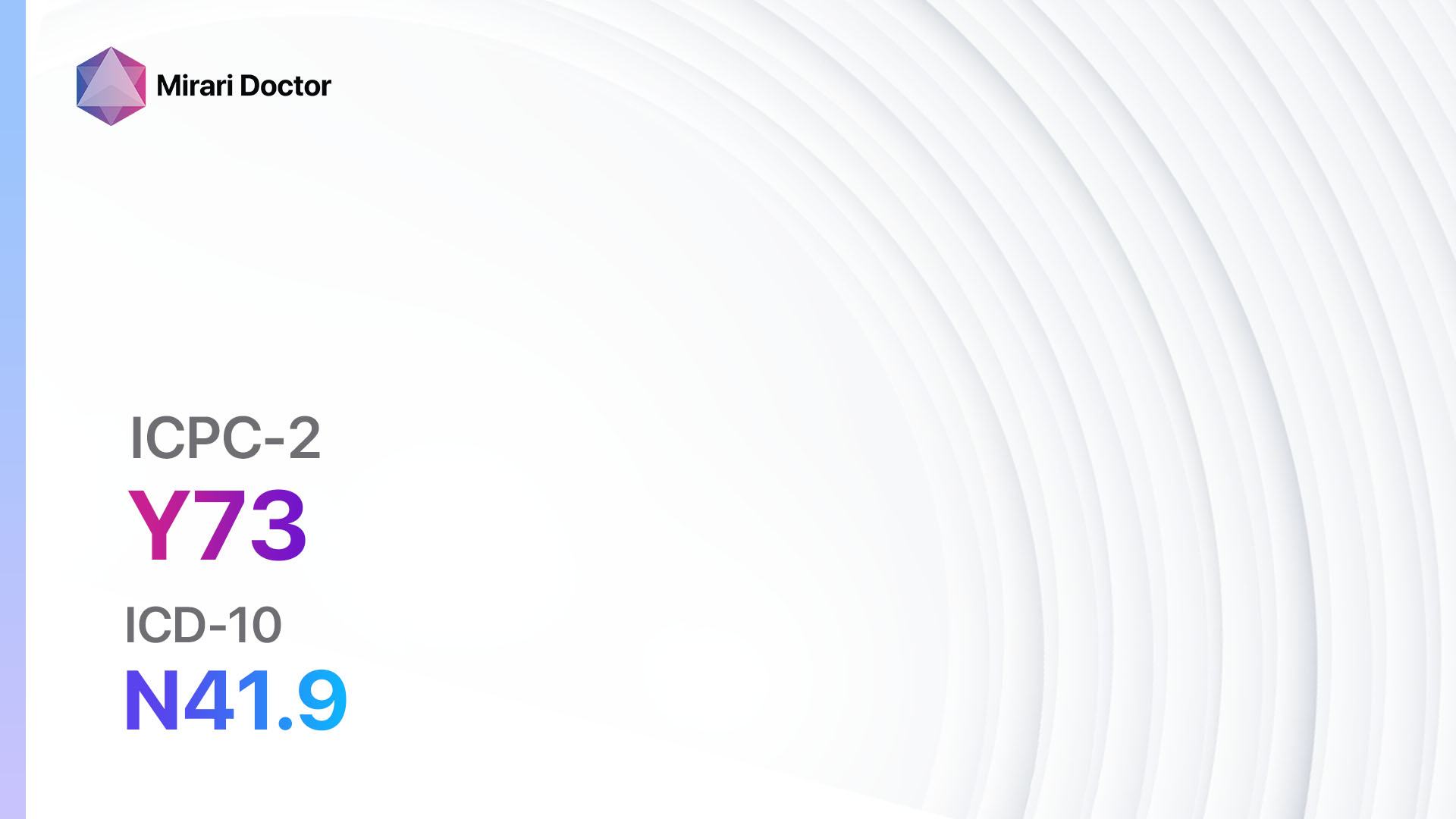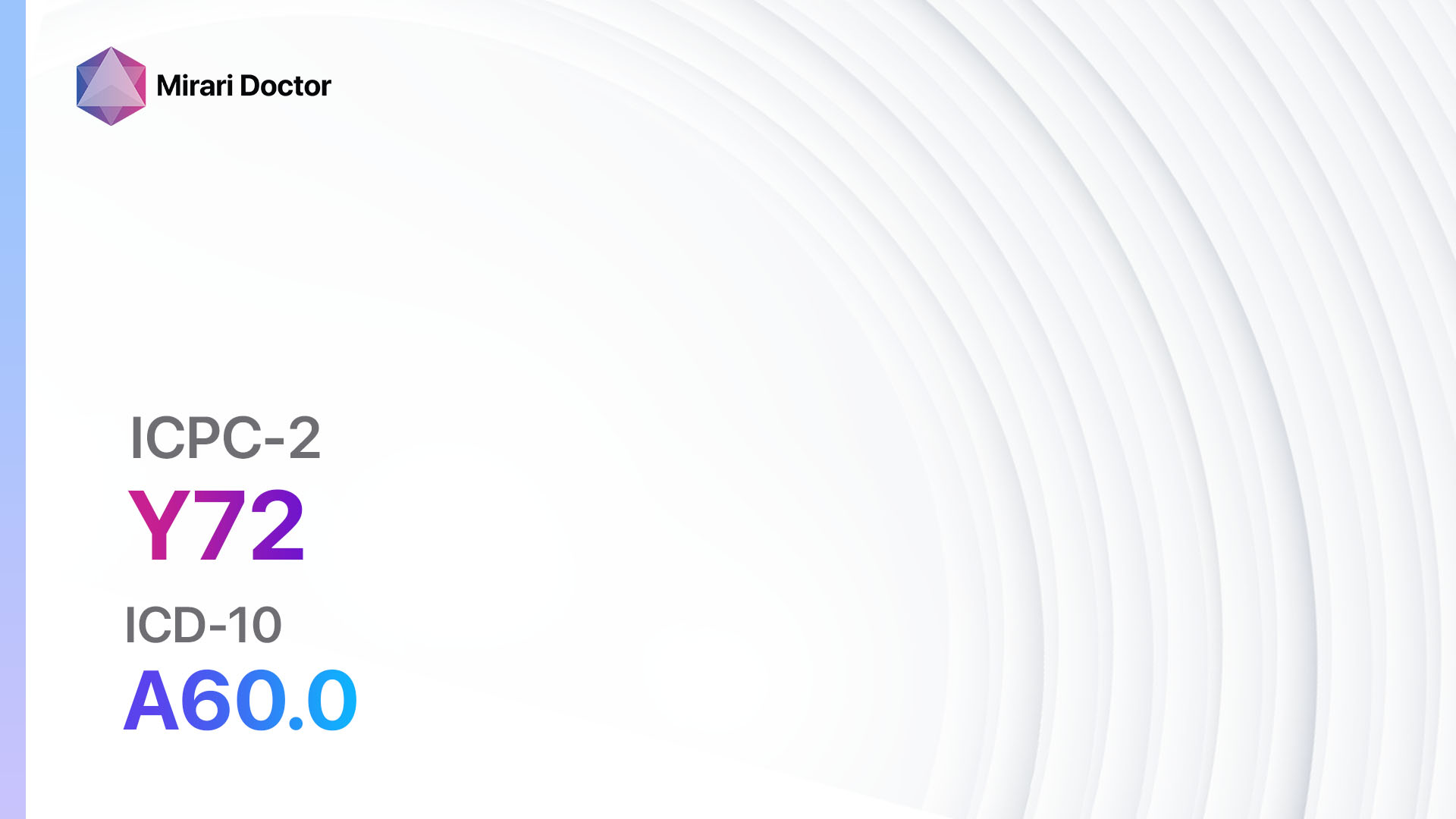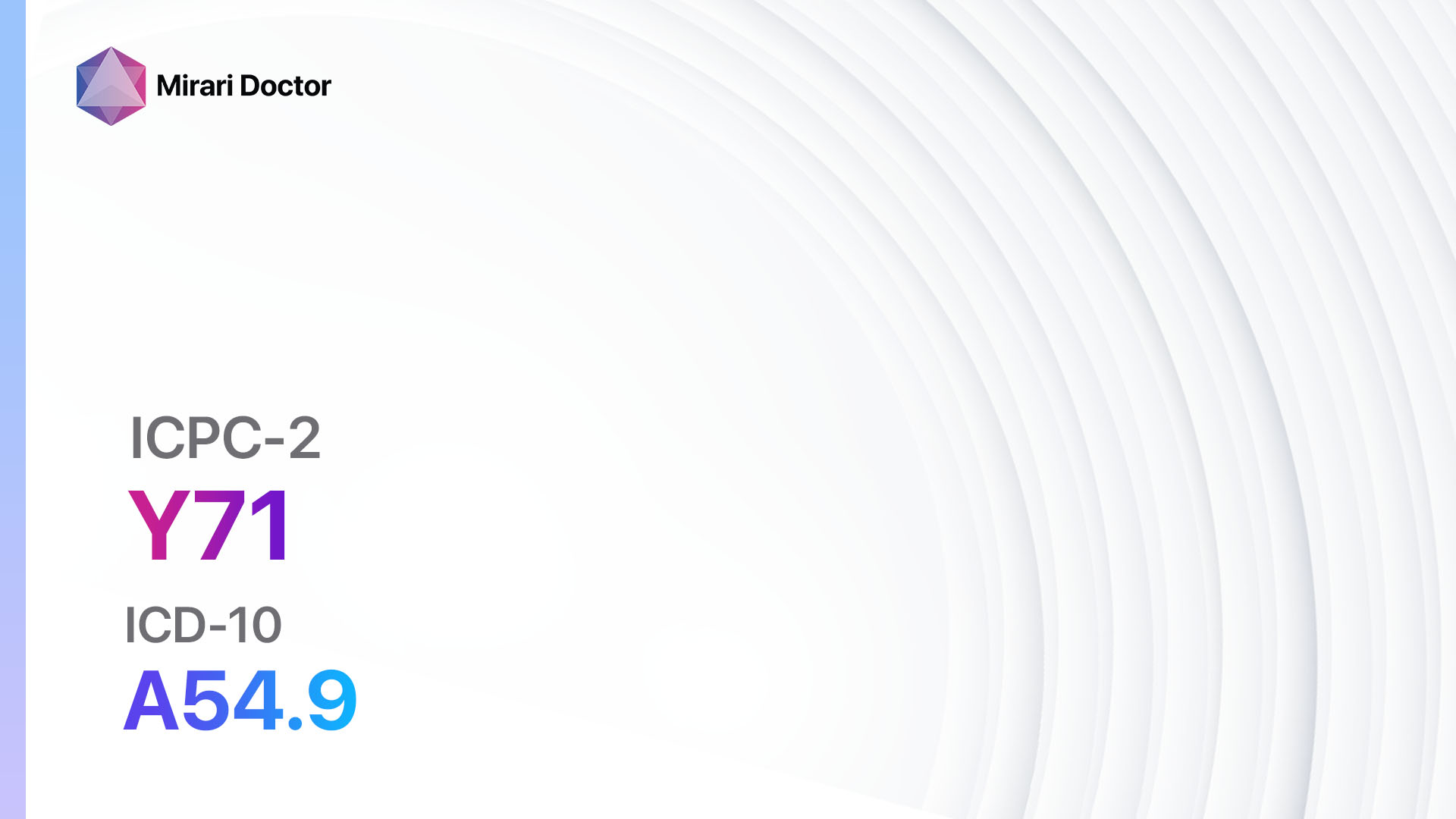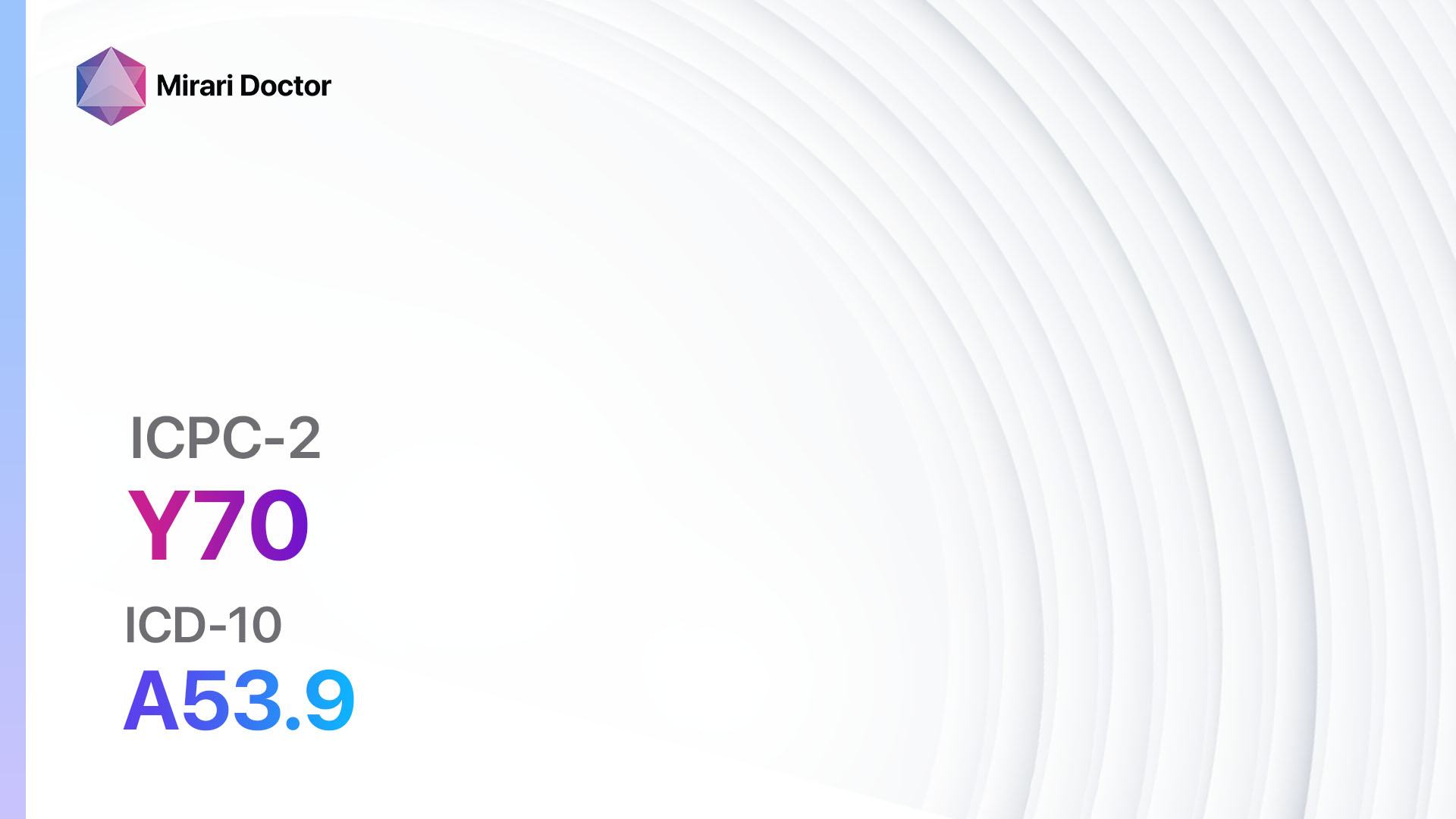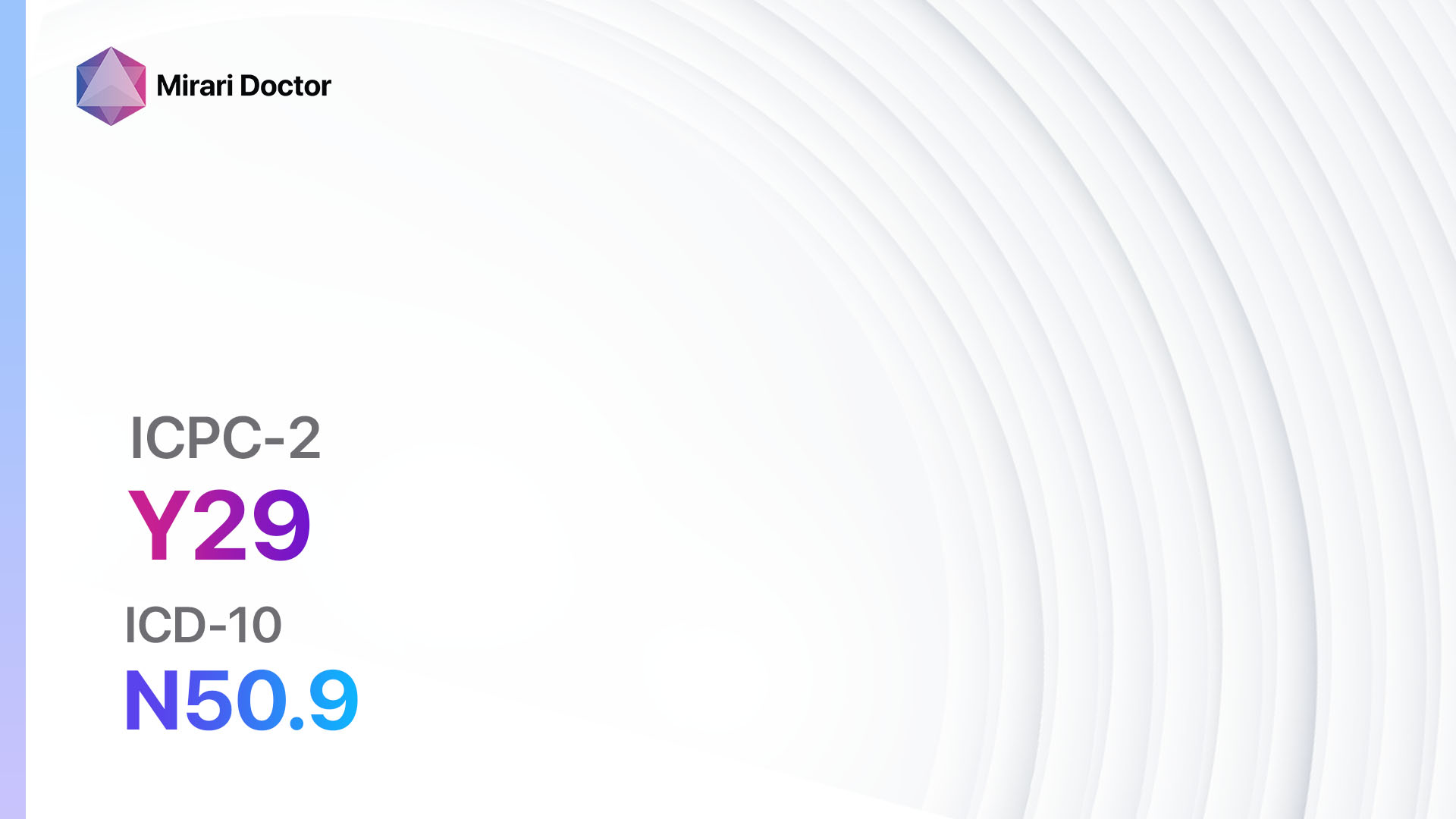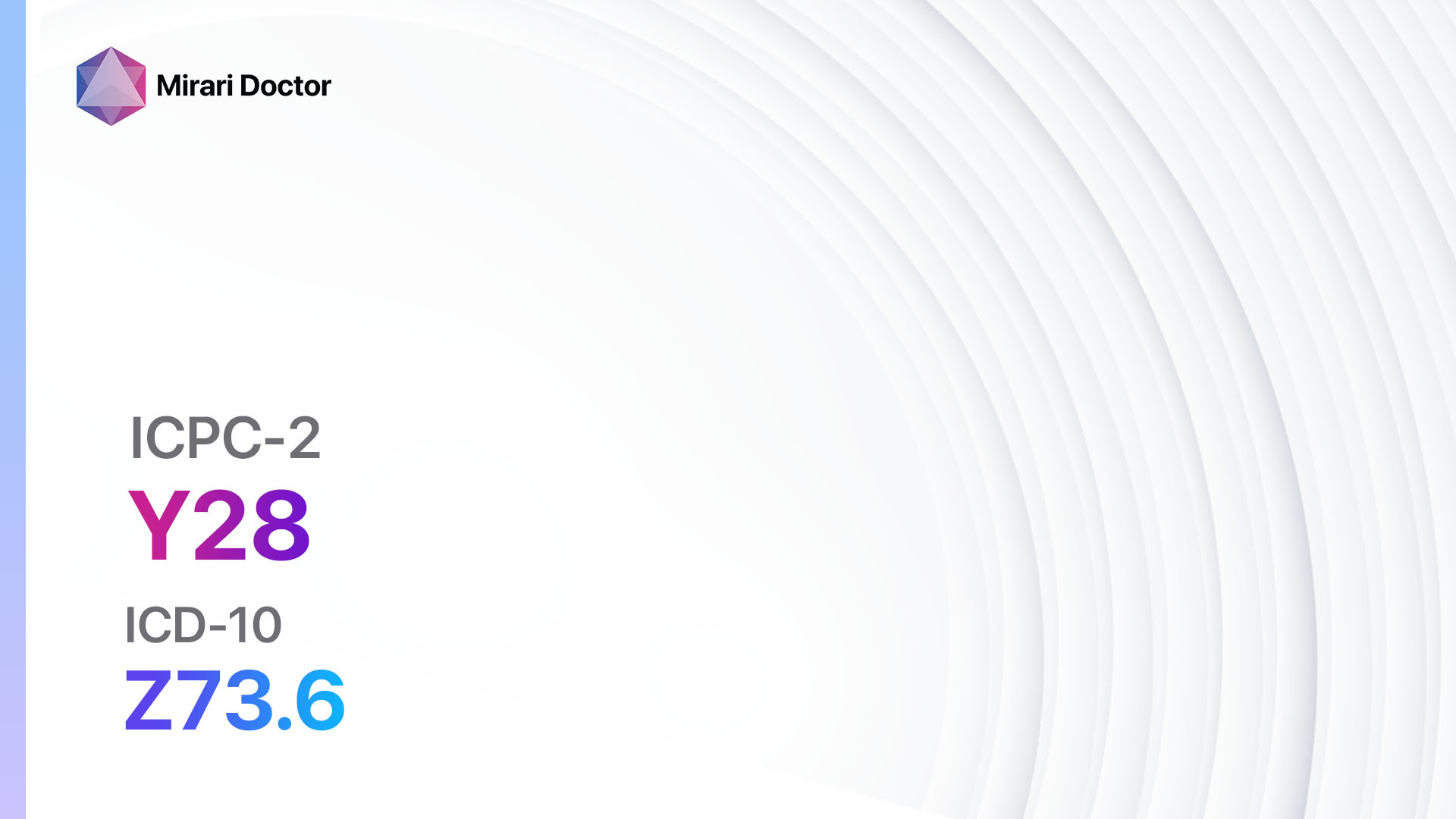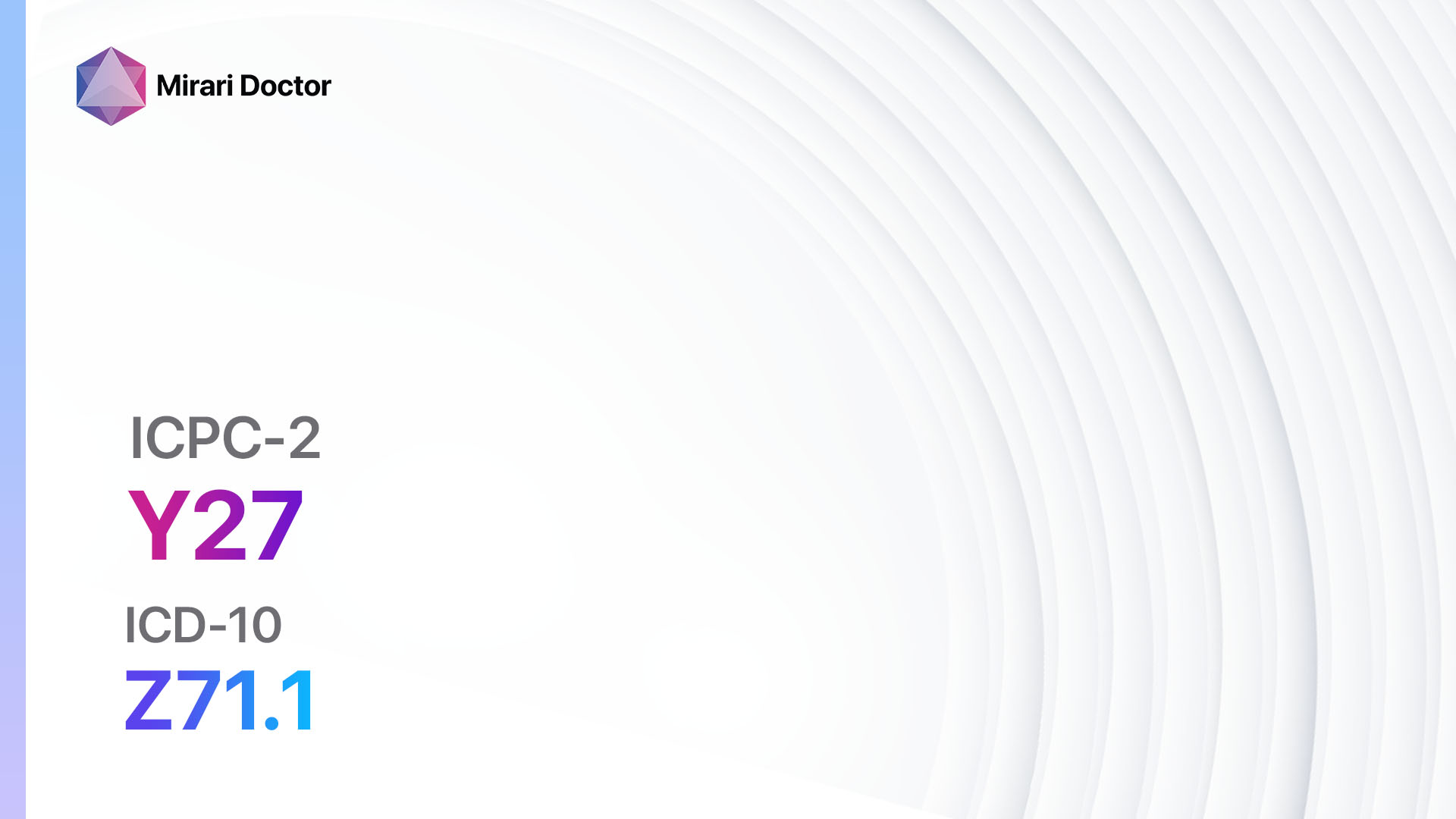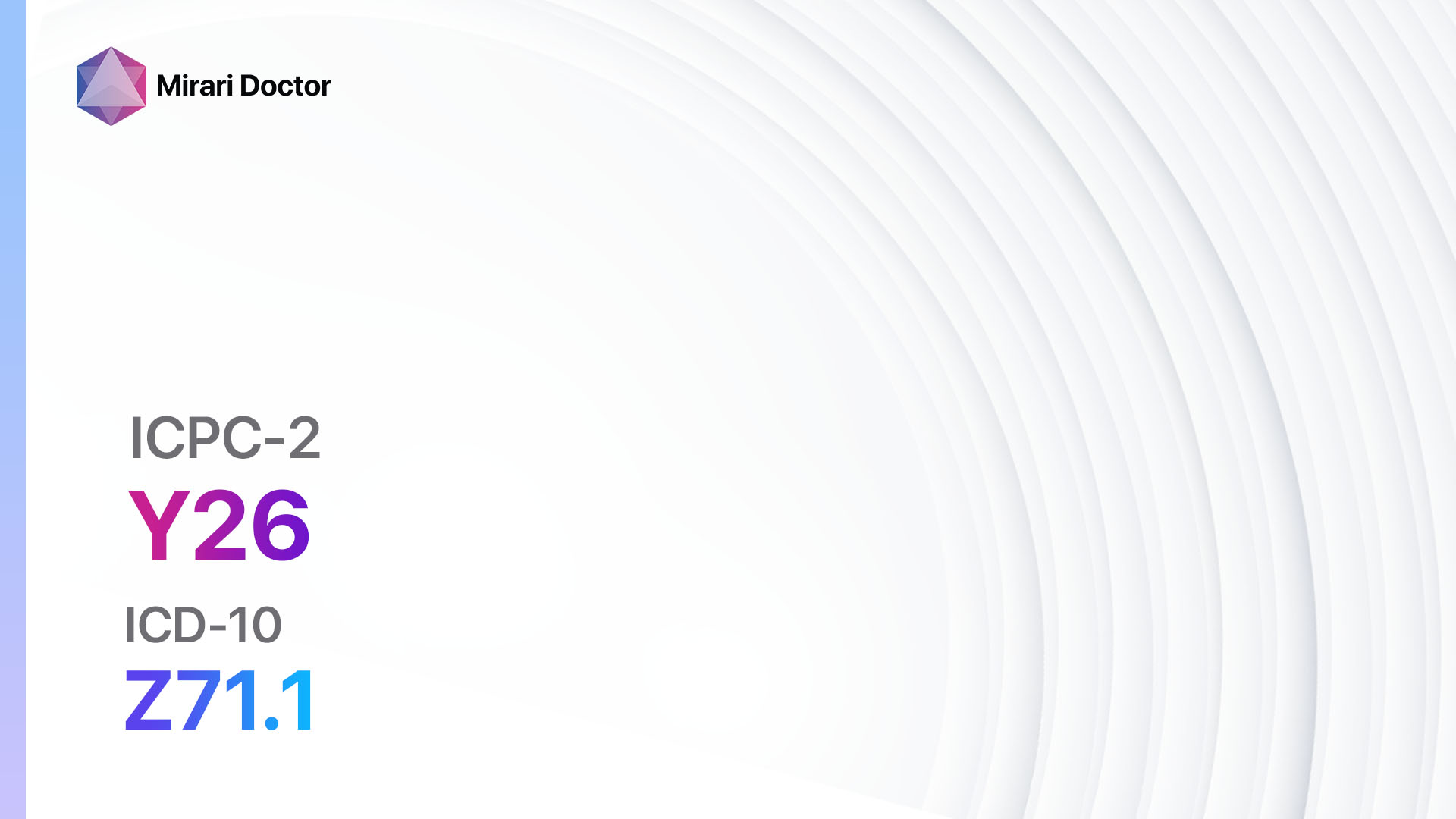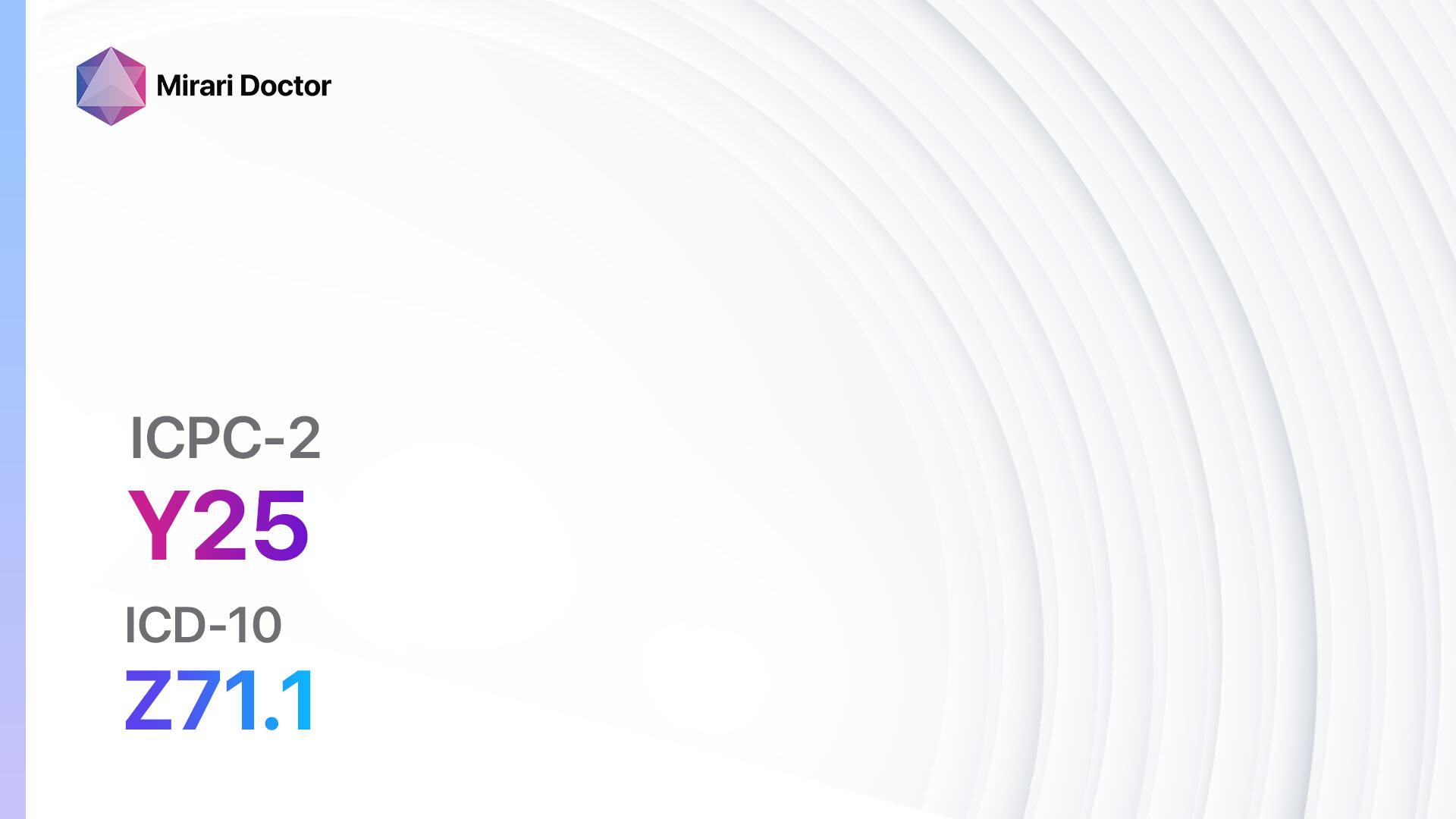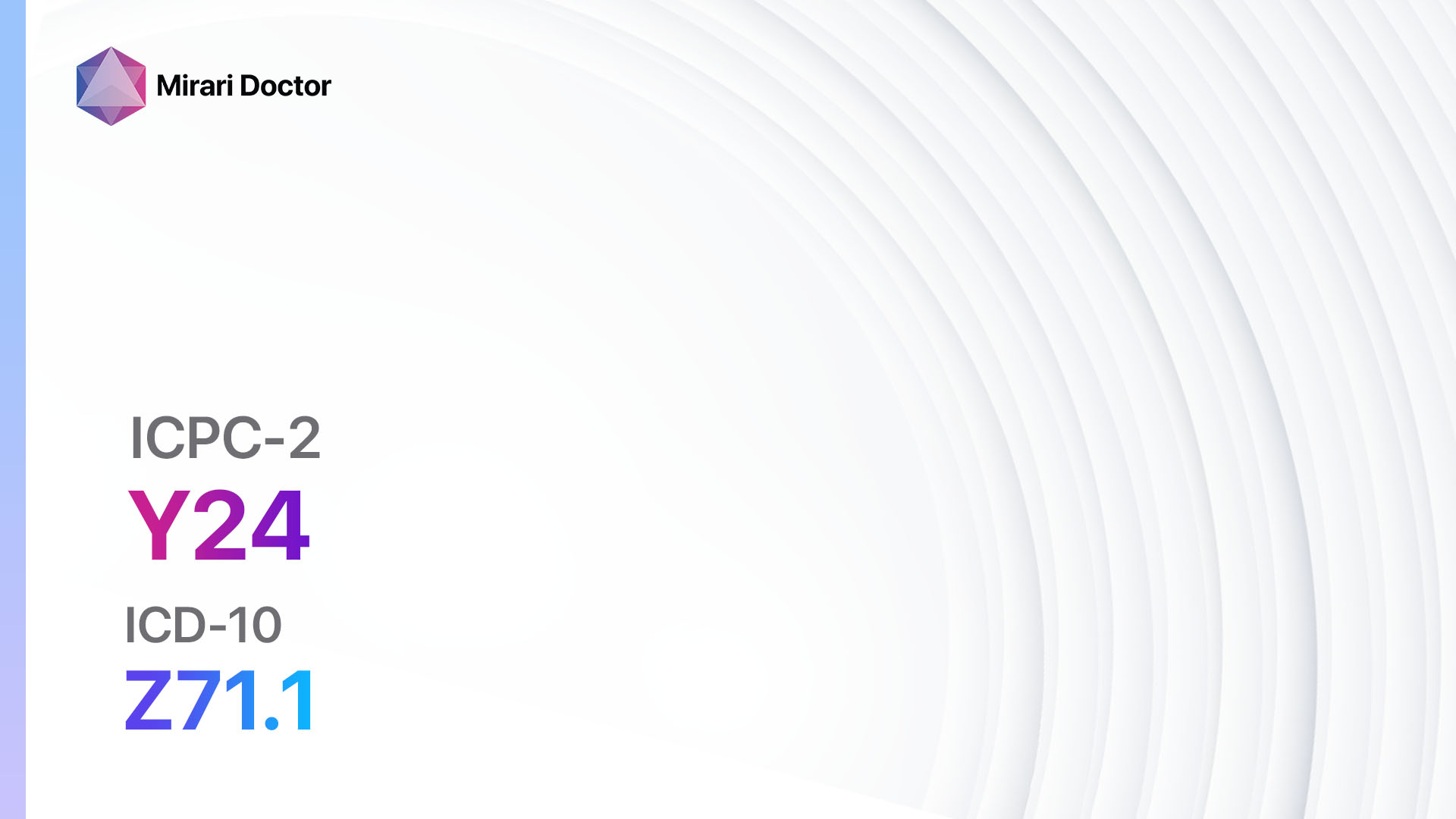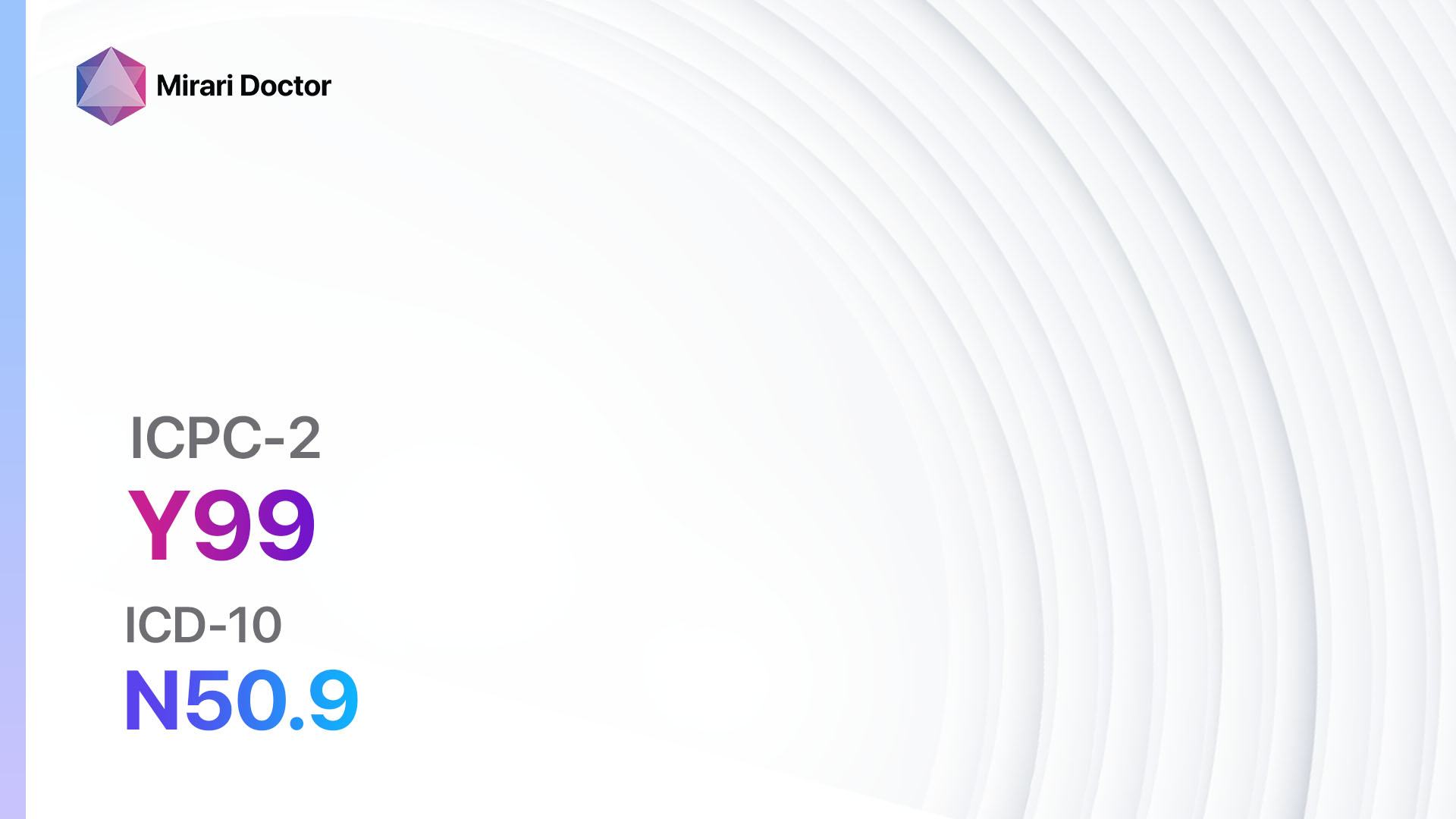
Introduction
Genital disease in males can encompass a wide range of conditions that affect the male reproductive system. While some conditions may be common and easily diagnosed, others may be less common and require further investigation.[1] This guide aims to provide an overview of the symptoms, causes, diagnostic steps, possible interventions, and patient education for genital disease in males.
Codes
- ICPC-2 Code: Y99 Genital disease male other[2]
- ICD-10 Code: N50.9 Disorder of male genital organs, unspecified[3]
Symptoms
- Pain or discomfort in the genital area
- Swelling or lumps in the testicles or scrotum
- Changes in urinary or sexual function
- Abnormal discharge from the penis
- Skin changes or rashes in the genital area[4]
Causes
- Infections, such as sexually transmitted infections (STIs), urinary tract infections (UTIs), or prostatitis
- Inflammation or injury to the genital area
- Hormonal imbalances
- Genetic or congenital abnormalities
- Tumors or cancers of the male reproductive system[5]
Diagnostic Steps
Medical History
- Gather information about the patient’s symptoms, duration, and progression
- Ask about any previous history of genital diseases or conditions
- Inquire about sexual activity and potential exposure to STIs
- Assess for any underlying medical conditions or medications that may contribute to the symptoms[6]
Physical Examination
- Perform a thorough examination of the genital area, including the penis, testicles, scrotum, and groin
- Look for any signs of inflammation, swelling, lumps, or skin changes
- Palpate the testicles for any abnormalities or masses
- Assess the lymph nodes in the groin for enlargement or tenderness
- Check for any pain or discomfort during the examination[7]
Laboratory Tests
- Urine analysis: to check for signs of infection or inflammation
- Blood tests: to assess hormone levels, rule out systemic diseases, or detect specific markers for cancers
- STI testing: to screen for common sexually transmitted infections
- Semen analysis: to evaluate sperm count, motility, and morphology
- Biopsy: if a suspicious lump or lesion is present, a tissue sample may be taken for further evaluation[8]
Diagnostic Imaging
- Ultrasound: can provide detailed images of the male reproductive organs and detect any abnormalities or tumors
- MRI or CT scan: may be used to further evaluate the extent of a suspected tumor or to assess nearby lymph nodes
- X-rays: can be used to evaluate the bony structures of the pelvis or identify calcifications[9]
Other Tests
- Cystoscopy: a thin tube with a camera is inserted into the urethra to visualize the urethra and bladder
- Urodynamic studies: to assess urinary function and identify any abnormalities in bladder function
- Genetic testing: may be considered in certain cases to evaluate for genetic abnormalities or predispositions to certain conditions[10]
Follow-up and Patient Education
- Provide the patient with a clear explanation of the diagnosis and the recommended treatment plan
- Discuss any lifestyle modifications or self-care measures that may be necessary
- Encourage the patient to attend regular follow-up appointments for monitoring and evaluation
- Address any concerns or questions the patient may have
Possible Interventions
Traditional Interventions
Medications:
Top 5 drugs for Genital disease male, other:
- Antibiotics (e.g., Ciprofloxacin, Doxycycline):
- Cost: Generic versions can range from $10 to $50 for a course of treatment.
- Contraindications: Allergy to the specific antibiotic, history of severe adverse reactions.
- Side effects: Upset stomach, diarrhea, allergic reactions.
- Severe side effects: Tendon rupture, severe allergic reactions.
- Drug interactions: Antacids, blood thinners, certain medications metabolized by the liver.
- Warning: Finish the full course of antibiotics as prescribed.
- Antifungals (e.g., Fluconazole, Clotrimazole):
- Cost: Generic versions can range from $10 to $30 for a course of treatment.
- Contraindications: Allergy to the specific antifungal, liver disease.
- Side effects: Nausea, headache, skin rashes.
- Severe side effects: Liver damage, severe allergic reactions.
- Drug interactions: Certain medications metabolized by the liver.
- Warning: Take as directed and complete the full course of treatment.
- Topical corticosteroids (e.g., Hydrocortisone cream):
- Cost: Generic versions can range from $5 to $15 per tube.
- Contraindications: Allergy to corticosteroids, skin infections.
- Side effects: Skin thinning, skin discoloration, localized allergic reactions.
- Severe side effects: Rare but possible systemic absorption leading to adrenal suppression.
- Drug interactions: None significant.
- Warning: Use sparingly and for a limited duration as directed by the healthcare provider.
- Alpha-blockers (e.g., Tamsulosin, Alfuzosin):
- Cost: Generic versions can range from $10 to $50 per month.
- Contraindications: Allergy to alpha-blockers, severe liver disease.
- Side effects: Dizziness, low blood pressure, abnormal ejaculation.
- Severe side effects: Priapism (prolonged erection), severe allergic reactions.
- Drug interactions: Other medications that lower blood pressure.
- Warning: Take the medication as prescribed and follow up with the healthcare provider regularly.
- Hormone replacement therapy (e.g., Testosterone replacement):
- Cost: Generic versions can range from $20 to $100 per month.
- Contraindications: Prostate or breast cancer, severe heart or liver disease.
- Side effects: Acne, fluid retention, increased risk of blood clots.
- Severe side effects: Worsening of prostate or breast cancer, liver damage.
- Drug interactions: Blood thinners, certain antifungals, certain medications metabolized by the liver.
- Warning: Regular monitoring of hormone levels and prostate health is necessary.
Alternative Drugs:
- Nonsteroidal anti-inflammatory drugs (NSAIDs) (e.g., Ibuprofen, Naproxen): Can help reduce inflammation and relieve pain. Cost: $5-$20 for a bottle of generic NSAIDs.
- Antivirals (e.g., Acyclovir, Valacyclovir): Used for viral infections such as herpes. Cost: $20-$100 for a course of treatment.
- Immunosuppressants (e.g., Tacrolimus, Cyclosporine): Used in certain autoimmune conditions. Cost: Varies depending on the specific medication and dosage.
Surgical Procedures:
- Circumcision: Surgical removal of the foreskin. Cost: $1,500 to $3,000.
- Varicocelectomy: Surgical repair of varicose veins in the scrotum. Cost: $4,000 to $10,000.
- Orchiectomy: Surgical removal of one or both testicles. Cost: $3,000 to $8,000.
Alternative Interventions
- Acupuncture: May help relieve pain and promote overall well-being. Cost: $60-$120 per session.
- Herbal supplements: Some herbs, such as saw palmetto or ginseng, may have potential benefits for certain conditions. Cost: Varies depending on the specific supplement.
- Physical therapy: Can help with pelvic floor muscle dysfunction or rehabilitation after surgery. Cost: $100-$200 per session.
- Nutritional therapy: Working with a registered dietitian to optimize nutrition and support overall health. Cost: Varies depending on the provider and duration of treatment.
- Psychotherapy: May be beneficial for psychological or emotional concerns related to genital disease. Cost: $100-$200 per session.
Lifestyle Interventions
- Healthy diet: Encourage a balanced diet rich in fruits, vegetables, whole grains, and lean proteins. Cost: Varies depending on individual food choices.
- Regular exercise: Promote regular physical activity to improve overall health and well-being. Cost: Varies depending on individual preferences (gym membership, equipment, etc.).
- Stress management: Encourage stress-reducing techniques such as meditation, yoga, or mindfulness. Cost: Varies depending on individual preferences (classes, apps, etc.).
- Smoking cessation: Advise patients to quit smoking to improve overall health and reduce the risk of complications. Cost: Varies depending on individual approach (nicotine replacement therapy, medications, etc.).
- Safe sex practices: Educate patients on the importance of using barrier methods and getting regular STI screenings. Cost: Varies depending on individual choices and access to resources.
It is important to note that the cost ranges provided are approximate and may vary depending on the location and availability of the interventions. Patients should consult with their healthcare provider for specific cost information and to determine the most appropriate interventions for their individual condition.
Mirari Cold Plasma Alternative Intervention
Understanding Mirari Cold Plasma
- Safe and Non-Invasive Treatment: Mirari Cold Plasma is a safe and non-invasive treatment option for various skin conditions. It does not require incisions, minimizing the risk of scarring, bleeding, or tissue damage.
- Efficient Extraction of Foreign Bodies: Mirari Cold Plasma facilitates the removal of foreign bodies from the skin by degrading and dissociating organic matter, allowing easier access and extraction.
- Pain Reduction and Comfort: Mirari Cold Plasma has a local analgesic effect, providing pain relief during the treatment, making it more comfortable for the patient.
- Reduced Risk of Infection: Mirari Cold Plasma has antimicrobial properties, effectively killing bacteria and reducing the risk of infection.
- Accelerated Healing and Minimal Scarring: Mirari Cold Plasma stimulates wound healing and tissue regeneration, reducing healing time and minimizing the formation of scars.
Mirari Cold Plasma Prescription
Video instructions for using Mirari Cold Plasma Device – Y99 Genital disease male other (ICD-10:N50.9)
| Mild | Moderate | Severe |
| Mode setting: 1 (Infection) Location: 0 (Localized) Morning: 15 minutes, Evening: 15 minutes |
Mode setting: 1 (Infection) Location: 0 (Localized) Morning: 30 minutes, Lunch: 30 minutes, Evening: 30 minutes |
Mode setting: 1 (Infection) Location: 0 (Localized) Morning: 30 minutes, Lunch: 30 minutes, Evening: 30 minutes |
| Mode setting: 2 (Wound Healing) Location: 0 (Localized) Morning: 15 minutes, Evening: 15 minutes |
Mode setting: 2 (Wound Healing) Location: 0 (Localized) Morning: 30 minutes, Lunch: 30 minutes, Evening: 30 minutes |
Mode setting: 2 (Wound Healing) Location: 0 (Localized) Morning: 30 minutes, Lunch: 30 minutes, Evening: 30 minutes |
| Mode setting: 3 (Antiviral Therapy) Location: 2 (Prostate & Uterus) Morning: 15 minutes, Evening: 15 minutes |
Mode setting: 3 (Antiviral Therapy) Location: 2 (Prostate & Uterus) Morning: 30 minutes, Lunch: 30 minutes, Evening: 30 minutes |
Mode setting: 3 (Antiviral Therapy) Location: 2 (Prostate & Uterus) Morning: 30 minutes, Lunch: 30 minutes, Evening: 30 minutes |
| Mode setting: 7 (Immunotherapy) Location: 1 (Sacrum) Morning: 15 minutes, Evening: 15 minutes |
Mode setting: 7 (Immunotherapy) Location: 1 (Sacrum) Morning: 30 minutes, Lunch: 30 minutes, Evening: 30 minutes |
Mode setting: 7 (Immunotherapy) Location: 1 (Sacrum) Morning: 30 minutes, Lunch: 30 minutes, Evening: 30 minutes |
| Total Morning: 60 minutes approx. $10 USD, Evening: 60 minutes approx. $10 USD |
Total Morning: 120 minutes approx. $20 USD, Lunch: 120 minutes approx. $20 USD, Evening: 120 minutes approx. $20 USD, |
Total Morning: 120 minutes approx. $20 USD, Lunch: 120 minutes approx. $20 USD, Evening: 120 minutes approx. $20 USD, |
| Usual treatment for 7-60 days approx. $140 USD – $1200 USD | Usual treatment for 6-8 weeks approx. $2,520 USD – $3,360 USD |
Usual treatment for 3-6 months approx. $5,400 USD – $10,800 USD
|
 |
|
Use the Mirari Cold Plasma device to treat Genital disease male, other effectively.
WARNING: MIRARI COLD PLASMA IS DESIGNED FOR THE HUMAN BODY WITHOUT ANY ARTIFICIAL OR THIRD PARTY PRODUCTS. USE OF OTHER PRODUCTS IN COMBINATION WITH MIRARI COLD PLASMA MAY CAUSE UNPREDICTABLE EFFECTS, HARM OR INJURY. PLEASE CONSULT A MEDICAL PROFESSIONAL BEFORE COMBINING ANY OTHER PRODUCTS WITH USE OF MIRARI.
Step 1: Cleanse the Skin
- Start by cleaning the affected area of the skin with a gentle cleanser or mild soap and water. Gently pat the area dry with a clean towel.
Step 2: Prepare the Mirari Cold Plasma device
- Ensure that the Mirari Cold Plasma device is fully charged or has fresh batteries as per the manufacturer’s instructions. Make sure the device is clean and in good working condition.
- Switch on the Mirari device using the power button or by following the specific instructions provided with the device.
- Some Mirari devices may have adjustable settings for intensity or treatment duration. Follow the manufacturer’s instructions to select the appropriate settings based on your needs and the recommended guidelines.
Step 3: Apply the Device
- Place the Mirari device in direct contact with the affected area of the skin. Gently glide or hold the device over the skin surface, ensuring even coverage of the area experiencing.
- Slowly move the Mirari device in a circular motion or follow a specific pattern as indicated in the user manual. This helps ensure thorough treatment coverage.
Step 4: Monitor and Assess:
- Keep track of your progress and evaluate the effectiveness of the Mirari device in managing your Genital disease male, other. If you have any concerns or notice any adverse reactions, consult with your health care professional.
Note
This guide is for informational purposes only and should not replace the advice of a medical professional. Always consult with your healthcare provider or a qualified medical professional for personal advice, diagnosis, or treatment. Do not solely rely on the information presented here for decisions about your health. Use of this information is at your own risk. The authors of this guide, nor any associated entities or platforms, are not responsible for any potential adverse effects or outcomes based on the content.
Mirari Cold Plasma System Disclaimer
- Purpose: The Mirari Cold Plasma System is a Class 2 medical device designed for use by trained healthcare professionals. It is registered for use in Thailand and Vietnam. It is not intended for use outside of these locations.
- Informational Use: The content and information provided with the device are for educational and informational purposes only. They are not a substitute for professional medical advice or care.
- Variable Outcomes: While the device is approved for specific uses, individual outcomes can differ. We do not assert or guarantee specific medical outcomes.
- Consultation: Prior to utilizing the device or making decisions based on its content, it is essential to consult with a Certified Mirari Tele-Therapist and your medical healthcare provider regarding specific protocols.
- Liability: By using this device, users are acknowledging and accepting all potential risks. Neither the manufacturer nor the distributor will be held accountable for any adverse reactions, injuries, or damages stemming from its use.
- Geographical Availability: This device has received approval for designated purposes by the Thai and Vietnam FDA. As of now, outside of Thailand and Vietnam, the Mirari Cold Plasma System is not available for purchase or use.
References
- Wein AJ, Kavoussi LR, Partin AW, Peters CA. Campbell-Walsh Urology. 11th ed. Philadelphia, PA: Elsevier; 2016.
- World Health Organization. International Classification of Primary Care, Second edition (ICPC-2). Geneva: WHO; 2003.
- World Health Organization. International Statistical Classification of Diseases and Related Health Problems, 10th Revision (ICD-10). Geneva: WHO; 2019.
- Mayo Clinic. Sexually transmitted diseases (STDs). Available at: https://www.mayoclinic.org/diseases-conditions/sexually-transmitted-diseases-stds/symptoms-causes/syc-20351240
- Wein AJ, Kavoussi LR, Novick AC, Partin AW, Peters CA. Campbell-Walsh Urology. 10th ed. Philadelphia, PA: Saunders; 2011.
- Kolon TF, Herndon CD, Baker LA, et al. Evaluation and treatment of cryptorchidism: AUA guideline. J Urol. 2014;192(2):337-345.
- Bhatt S, Dogra VS. Role of US in testicular and scrotal trauma. Radiographics. 2008;28(6):1617-1629.
- Ferlin A, Arredi B, Foresta C. Genetic causes of male infertility. Reprod Toxicol. 2006;22(2):133-141.
- Dogra VS, Gottlieb RH, Oka M, Rubens DJ. Sonography of the scrotum. Radiology. 2003;227(1):18-36.
- Schlegel PN, Li PS. Microdissection TESE: sperm retrieval in non-obstructive azoospermia. Hum Reprod Update. 1998;4(4):439-443.
Related articles
Made in USA


